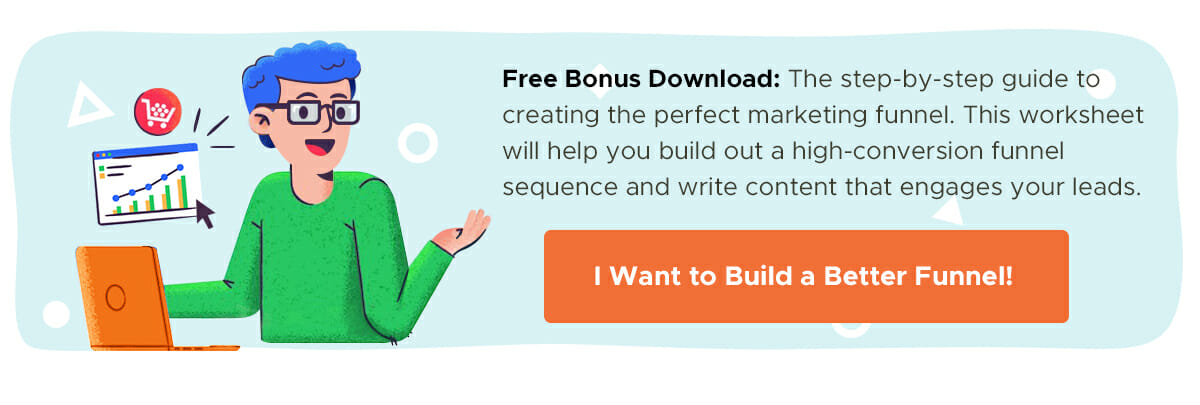Facebook Groups are nothing new. In fact, they’ve been around for a decade, making them one of the social network’s oldest features. But after the Facebook algorithm update that de-prioritizes brand content, these groups have become even more important for connecting with a brand’s followers.
Major brands have enjoyed significant success from creating and growing their own groups, and Facebook head honcho Mark Zuckerberg has stressed that he wants them to play a bigger role in the site’s everyday user experience.
His focus can work to your advantage – and it doesn’t have to cost you anything at all. Here’s why you should be paying attention to Facebook Groups, as well as how to grow your own without spending any money.
What Is a Facebook Group and How Is It Different from a Page?
A Facebook Group is a place where a community can come together to engage on a shared interest, whether that’s a cause, an issue or an activity. They’re not the same as Facebook Pages, which were designed to be the official Facebook presence for any given entity (like a brand, business or celebrity).
As an example, let’s say you’re a fan of the Amazon and BBC sitcom Fleabag. If you want to keep up-to-date with the latest information about the show from the people who created it, you’d connect with the official Facebook Page:
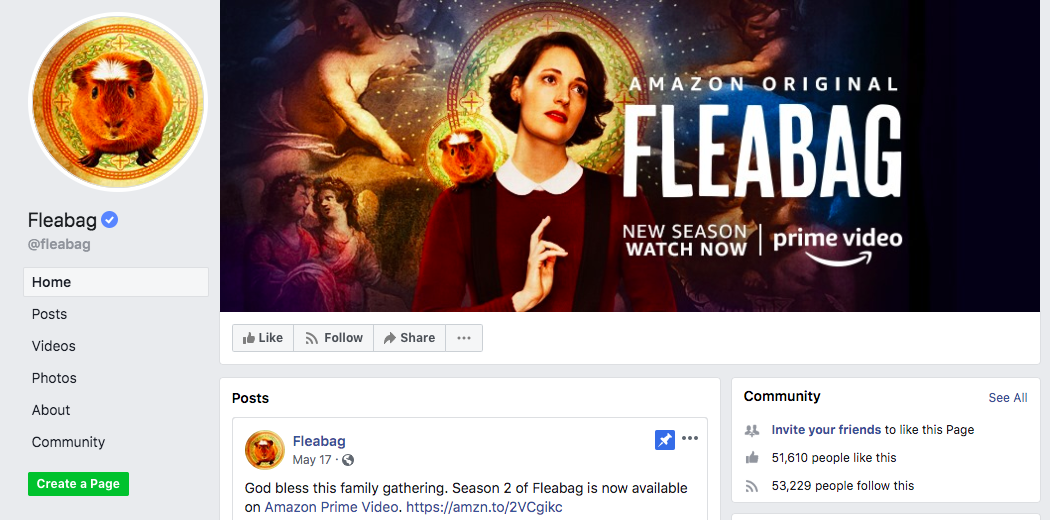
Alternatively, you could join a Fleabag Facebook Group – such as this one – to chat about what’s happening on the show with fellow fans.
There’s one other key difference. Whereas Pages are automatically public, meaning that anyone can see them, Groups can be set up in one of three ways:
- Publicly Available: Anyone can join
- Administrator Approval: Administrators review applications to join the Group and decide whether or not to approve them
- Private: Group membership is by invitation only
What’s the Big Deal About Facebook Groups?
As digital marketers, we’re naturally busy people. You might already be posting regularly across multiple social networks, alongside a host of paid and organic search activity. So what’s so special about Facebook Groups? Why should you be paying attention?
Practically speaking, they’ve become a necessity for brands on Facebook since the site tweaked its algorithm at the start of 2018 to promote more posts from family and friends and less commercial content. This move limited the reach of organic posts from businesses, forcing them to choose between investing more money in Facebook ads or building a vibrant Group to continue reaching their audience on the platform.
Brands that chose the Facebook Groups approach have seen real success. Groups generate far better engagement than fan pages and, when run effectively, can create an active community centered around your products or services.
It seems that users like them, too. If you’re anything like me, you’ll regularly interact with half a dozen or so Groups that you’ve signed up to, whether they’re professionally focused, hyper-locational, service-based or related to your hobbies and interests.
And the numbers back up my experiences. Membership of Facebook Groups climbed 40% in 2018, with more than half of the network’s users (1.4 billion people) using them every month. One in seven users belongs to what Facebook calls “meaningful Groups” – those that play a key role in their members’ daily lives. By 2024, Zuckerberg wants to see the number of users in such Groups climb to one billion.
Dive Deeper:
Case Study: Condé Nast Traveler
Luxury lifestyle and travel magazine Condé Nast Traveler raised a few eyebrows in 2017 when it launched a closed Facebook Group called Women Who Travel. Rather than chasing followers with giveaways and competitions, the magazine’s Group forced users to apply for membership by explaining why the Group matters to them.
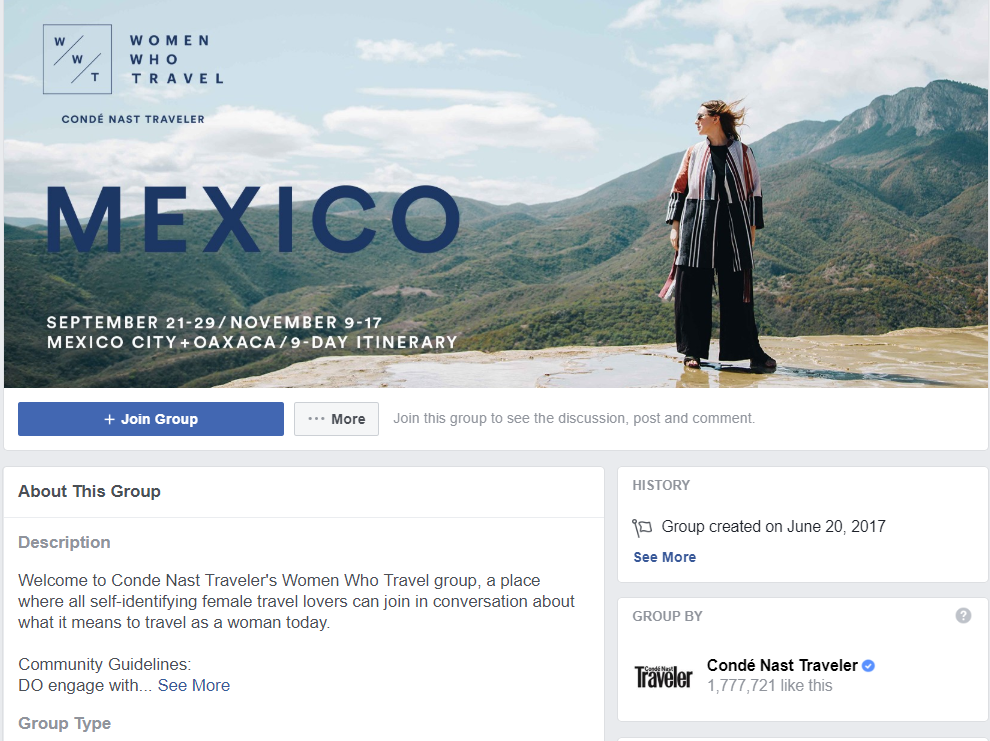
It worked. Within a year, the Group grew to more than 50,000 members, three-quarters of whom actively engaged with it on a monthly basis (at time of writing, it’s grown further still and currently has over 138,000 members). Since then, Condé Nast has launched Facebook Groups for a further eight of its brands, including The New Yorker, Teen Vogue and Vanity Fair.
Molly McGlew, social media strategist at Condé Nast, explains:
“We wanted to explore a new social channel that might be able to bring something different, and develop niche communities. People actively choose to come here for this conversation. It’s so much more supportive and you can actually have dialogue.”
Case Study: Bannersnack
Digital graphics service Bannersnack created a Facebook Group to connect with its clients, build a community for sharing work and receiving feedback, and offer exclusive insider news and early access to new products to its members.
The brand used a diverse range of tactics to grow its Group, including sending invites via Facebook Messenger to people who had already engaged with the brand, and promoting the Group through email newsletters like this one:
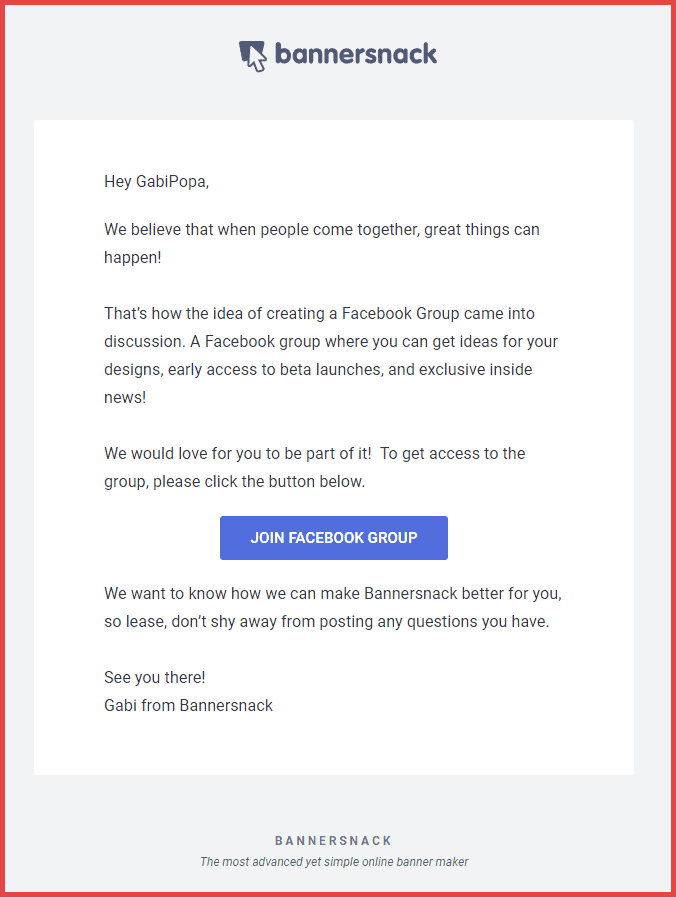
The company’s efforts paid off, resulting in a 400% increase in members and boosting engagement with the group by 350%.
Considerations Before Starting a Facebook Group
If you’re convinced that a Facebook Group can play a vital part in your brand’s social strategy, there are a few key things to consider before you launch.
What Does Facebook Group ‘Success’ Look Like for You?
It might sound like an obvious question, but it’s often overlooked: Ask yourself why you want to launch and grow a Facebook Group.
Presumably, the real reason isn’t simply to acquire a few thousand followers. More likely, the end goal for all your marketing efforts is to drive sales or generate leads. If that’s the case, it needs to be reflected in the content you post within the Group, whether that’s through exclusive offers, previews of upcoming product releases or video tutorials demonstrating how your product or service works.
Whatever your ultimate goal, you need to have some way of measuring your performance. Do this by setting actionable KPIs using the “SMART” methodology:
- Specific: Is it completely clear what your Facebook Group KPI relates to? Don’t leave any wiggle room.
- Measurable: Literally, can it be measured? Can you put a number against it?
- Attainable: Is it realistic? We’d all love to quadruple sales overnight, but it’s probably not going to happen, at least not just with a Facebook Group.
- Relevant: Does it align with your wider objectives? If your ultimate aim is to increase lead generation through your Facebook Group, this should be reflected in your KPIs.
- Timely: Set a time period over which your performance will be measured.
A good example of a KPI could be: “Increase clicks to our website from our Facebook Group by 15% over the next quarter.”
Dive Deeper:
Do You Have the Time and Resources to Manage a Facebook Group?
As with any organic marketing tactic, Facebook Groups don’t just blossom overnight. You need to put the effort in to make your Group a success and give users a reason to sign up (generally because they can’t find this elsewhere).
If you don’t have the time or resources to commit to your Facebook Group, you can’t expect to build a strong, engaged community on the platform. But don’t ever outsource Facebook Group management, at least until you’ve set a Group tone. Your Group is an intimate setting where you’re facilitating conversation, so it should be run by someone who knows your brand inside and out.
How Do I Set Facebook Group Rules?
The best Groups have clear guidelines in place about how they operate. This sets user expectations from the moment they join and keeps things running smoothly (as long as Group admins enforce them). Again, this might sound obvious, but I’ve seen plenty of Groups that don’t do this – and they rarely work as well as those that do.
Creating rules for your Group is simple if you follow these steps:
- From your News Feed, click “Groups” in the left menu and select your Group.
- Click “Moderate Group” in the left menu, then select “Create Rules”.
- Click “Create Rule”, and give your rule a title and description.
- Click “Confirm”.
You can adjust the order in which your rules appear by clicking the “dots” symbol and dragging them into the desired position.
So what should your rules look like? The guidelines you’ll want to put in place will obviously depend on your brand and audience, but as a helpful starting point, here are the kinds of things you should include:
- An in-depth explanation of the Group’s background
- Your goals for the Group (such as promoting discussion about a certain topic)
- Your national/region focus, if applicable (are you only targeting people in a certain city or state?)
- A clear explanation of what sort of activity is considered “spam” or disrespectful to other members, and the actions you’ll take to police it
- A rundown of resources available to Group members, such as videos or guides, and how to find them
- A list of all current admins, plus details of their authority level
Once you’ve created your rules, save them in a Facebook document and make this your pinned post, so that they’ll appear at the top of the Group at all times:
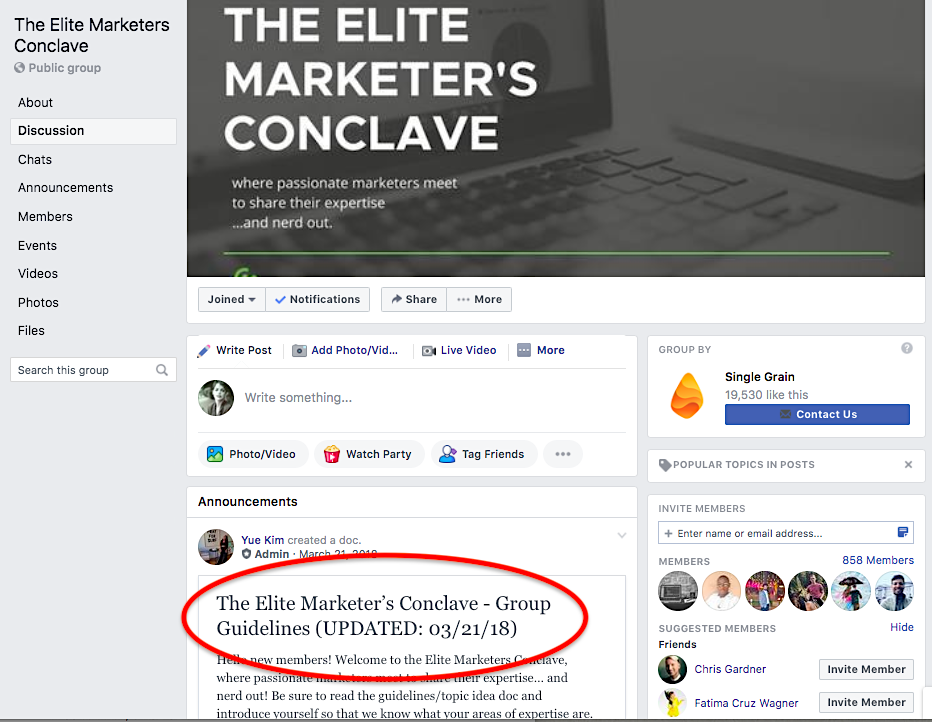
Here’s a snippet of the rules for our Facebook Group, The Elite Marketer’s Conclave:
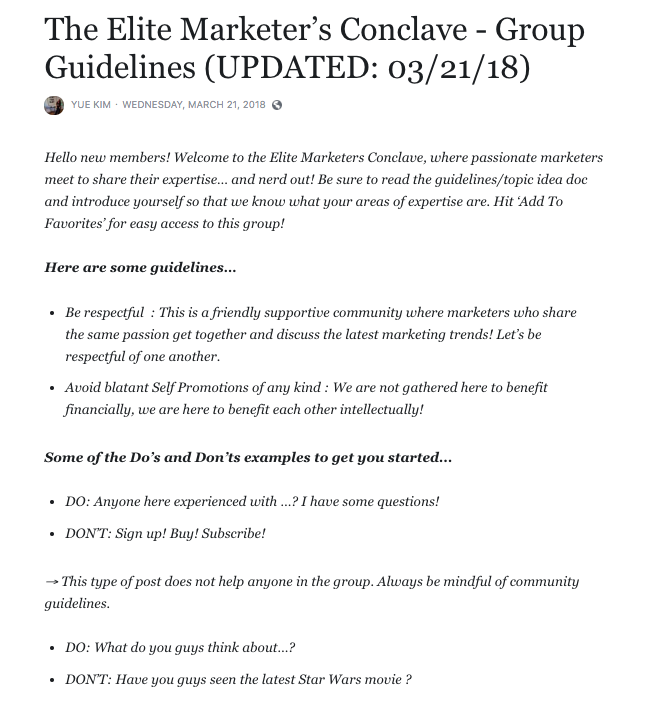
You’ll also need to dedicate the time to enforce your rules. If you can’t commit the time yourself, you’re either going to need to bring on moderators (volunteer or paid) or invest in a different marketing tactic.
Dive Deeper:
Growing Your Facebook Group
So you’ve put in the hard work. You’ve figured out what you’re trying to achieve, you’ve got the time and resources to make it happen, and you’ve drawn up a clear set of guidelines. Now for the fun part – launching your Group.
Over the past few years, I’ve been a part of dozens of Facebook Groups, and I’ve picked up plenty of insights along the way about what to do and what to definitely not do when running one:
Do:
- Offer your members valuable content and targeted offers
- Interact with your members and ask questions
- Ask your most dedicated fans for help in growing the Group
- Set clear rules so your members know what to expect
- Send links to the Group to Facebook users you think would be interested
- Create a strong theme to the content you post
Don’t:
- Spam members with constant discount codes
- Post dozens of times a day (you’ll risk driving members to switch off their Group notifications)
- Overstretch by trying to handle all the admin yourself
- Allow regular rule-breakers to spoil the Group for everyone else
- Add people to a Group they know nothing about (or encourage others to do so)
- Veer off topic and latch onto irrelevant trends
Once you’ve got the basics down, you’re in a great position to shift your focus towards increasing your membership. Follow these tips, and there’s no reason you won’t be able to grow your Group to thousands of members without having to spend a single dollar:
Give People a Compelling Reason to Join
“If you build it, they will come” might work for baseball diamonds, but it definitely doesn’t work for Facebook Groups. You can’t expect people to sign up just because it’s there. Fortunately, there are a few ways to create a compelling reason for users to join:
- Use the ‘About’ section – found at the top left of the Group page – to explain exactly what makes your Group so great. Detail the Group’s purpose, the sort of content you’ll post there and the kind of experience that users can expect. You’ve only got 3,000 characters to play with, so use them wisely.
- Give users an incentive to sign up. I’m not saying you have to give away a discount code or free shipping the second they join, but you should outline your value proposition. Let them know if you run weekly giveaways, competitions and promotions that are exclusive to Group members, for example, or promise to give them the first look at your upcoming product launches. Give them a feel for the variety of content they’ll be able to find in your Group, including resources like lead magnets, scripts and templates.
- Pick an engaging theme for your Group – something that people will want to talk about with other like-minded people. Take a leaf out of social media maven Sunny Lenarduzzi’s book; she has more than a dozen Groups, but significantly, not one of them is about her. Instead, they’re based around topics that are relevant and interesting to her audience. Unless you already have a huge, engaged social following – think Nike or Tesla – people probably won’t want to join a Group solely to discuss you or your business.
Inform Your Existing Audience
Unless you’re a completely new brand, you’ll already have some sort of audience, whether that includes visitors to your website, previous and prospective customers, subscribers to your newsletter or readers of your blog.
Let them know that your Facebook Group exists:
- Mention it in email blasts, as in the case study I showed you earlier from Bannersnatch
- Reference it on your website and provide a link to the Group
- Drop CTAs into your blog posts (for example, “Like what you read? Be the first to know about our latest guides by joining our Facebook Group.”)
- Use exit popups to drive users toward your Group
Chanty, an alternative to Slack, does this really well by asking people who’ve completed a survey on its website to share more thoughts in its Facebook Group:

Get in Front of New Audiences
While there’s certainly value in building a tight-knit community of people who are long-time followers of your brand, chances are you’ll also want to attract users who aren’t so familiar with you.
When it comes to getting in front of new audiences, ads can be effective, but if you don’t want (or lack the budget) to run paid activity, you’ll need to get a bit creative. Here are a couple of my favorite tried-and-trusted ways to amplify Facebook Groups:
- Guest blogging: Reach out to a website owner with a relevant audience and offer to write about a topic that would interest them, in return for mentioning (and, ideally, linking to) your Group.
- Offer yourself up as an interviewee: Ask people to interview you (or some other figurehead for your business) on their blog or podcast. You don’t need to be a big name. You just to have something interesting to say. Just be sure to mention your Facebook Group.
- Create webinar content for Group members: Offer your members exclusive access to a webinar. Promote it outside the Group – in your newsletters and via your other social profiles – to get the word out. For bonus amplification, get a co-presenter onboard and ask them to promote it to their audience, too.
- Reach out to influencers: Identify people with large, engaged followings who operate in the same space as you and ask them to promote your Group. While you’ll almost certainly need to give them a reason to do so, this doesn’t necessarily mean paying them. If your content is high-quality and genuinely unique, there’s a much better chance that influencers will be prepared to recommend you.
Both of these approaches can be really effective, but there are no guarantees that people will say “yes.” If you ask 100 people to guest post or interview for them, maybe only five or ten will agree. Don’t take it personally. Instead, keep going. Eventually, the numbers will pay off for you.
Dive Deeper:
Take Advantage of Live Streaming to Drive Visibility
Facebook loves video. It wants to be the number one video platform, but it has stiff competition from YouTube, so it’s incentivizing users to create more – and better – video content. Right now, the average engagement rate for Facebook video posts is 6.01%, which is significantly higher than posts containing photos (4.81%), links (3.36%) and text-based statuses (2.21%):

Creating video is more likely to get your Page noticed organically, which in turn gives you the opportunity to promote your Group without having to shell out any cash. That said, not all video is created equal: People watch live video 3x longer compared to videos that aren’t live.
In short, you should be using video to get in front of more users, generate more engagement and encourage people to join your Group. People are often intimidated at the thought of creating Facebook video content, but it’s really pretty simple thanks to the site’s Live and Watch Party features.
Facebook Live
As its name suggests (and as you probably already know), Facebook Live allows you to broadcast live video to a Group or Page. Seeing as we’re trying to grow your Group, you’ll want to go live from your Page.
Struggling for a topic? Draw inspiration from the news and trends affecting your audience. Let’s say you’re running a marketing agency. Create a video to cover your reaction to a big development in the industry, such as an algorithm update by Google or the launch of a new feature by Facebook. If it makes for a good blog topic, chances are it’ll make for a good video.
Write down some talking points, do a couple of rehearsals and give it a go. I’ve found it’s often easier (and less intimidating) if you stage the video as a discussion with a colleague or a fellow expert.
The easiest way to go live is from a phone or tablet, as it’ll save you messing around with microphones and webcams. To do it, just follow these simple steps:

Whatever topic you choose, remember to mention your Group and encourage viewers to join for exclusive video content (and more). Which brings us to Watch Parties…
Watch Party
A more recent feature than Facebook Live, Watch Party was introduced for all Groups in July 2018 as a means to bring people together and create conversations around video. Interestingly, during the testing phase, the social network found that some Watch Party sessions ran for more than ten hours, with viewers dropping in and out throughout the day:
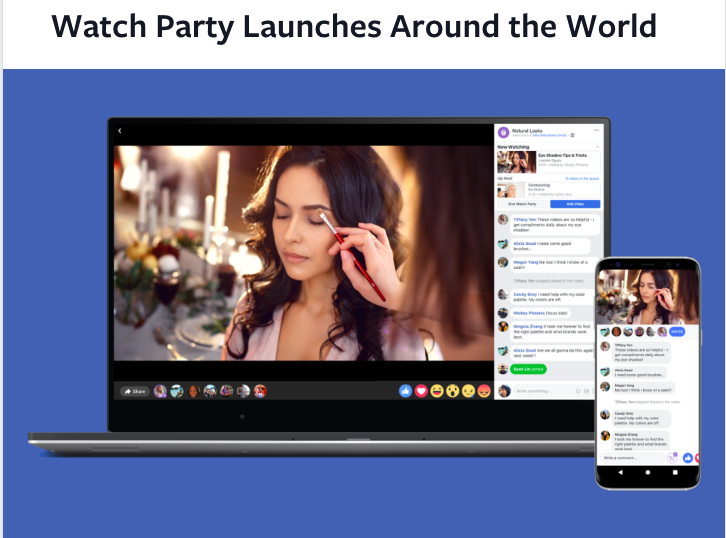
Since its launch, Watch Party has been rolled out to all Page and profile types on Facebook. So while it was already an invaluable way to keep your Group engaged, it’s also become a go-to tool for growing your membership.
The idea of connecting with large audiences through video on Facebook is nothing new. But a crucial stumbling block has been the struggle to reach enough users and make it simple for them to interact while watching.
Watch Party attempts to solve this problem by introducing scheduling, invites and notifications, making it easier for video hosts to motivate their audience. It seems to be working: Watch Parties generate 8x more comments than non-live videos.
Plenty of brands have been taking advantage. The WWE, for example, uses Watch Parties to engage its international audience by re-airing episodes of its Mixed Match Challenge show. Buzzfeed raised awareness of the latest season of its Worth It series by hosting binge-watching parties of previous seasons:
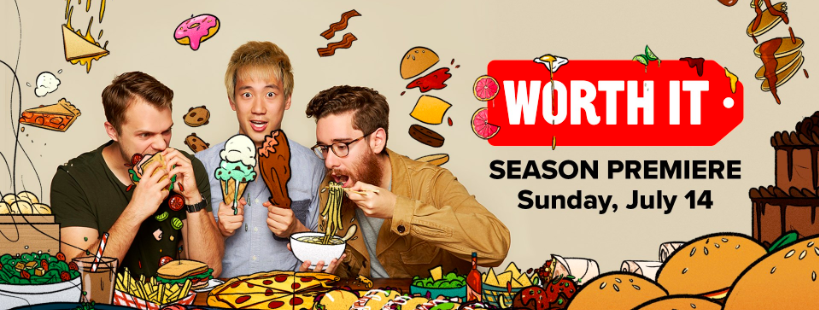
To create your own Watch Party, just take the following steps:
- Click “Write Post” at the top of your Group page, then click “Watch Party.”
- Click “Add Video.” You’ll then be given the choice to add different types of video: Watched, Group, Saved, Suggested and Live.
- Click “Add to Queue” next to any videos you’d like to add to your Watch Party, then click “Done.”
- Add a description of your Watch Party so your audience know what to expect, then click “Post.” A message will appear instructing you that your Watch Party is about to start.
Once the party begins, you’ll be able to add additional videos to the queue, invite more people and interact with your audience. When you want to wind things up, just click “End Watch Party.”
Dive Deeper:
Turn Your First 500 Members into Group Evangelists
Once your Facebook Group gets to a certain size, growing it further becomes less about your own direct actions, and more about evangelizing your existing audience by making them feel like a key part of your journey. Remember: the larger your Group, the greater potential it has to grow quickly. Just don’t be afraid to ask your members for a little help.
Use Other Groups for Cross Promotion
Ask your members who else should be in the Group, and incentivize them to bring in new members by offering them a free e-book, a place on an exclusive webinar or even some type of promo code. This can be particularly effective when your members are in other relevant Groups, providing them with an easy platform to promote your own Group.
A word of caution here, though: While some Group admins will be more than happy for you to engage in a bit of cross-promotion, others will frown on it and might even kick you out. They’re well within their rights to do this; it’s their Group and their rules.
Do what I do: reach out to admins before you try to coax their members into your Group. Good manners cost nothing. Ask really nicely and admins might even be willing to pin your promotional post for a day or so, guaranteeing you plenty of visibility.
Spread the Word Through Social
While your potential members obviously have Facebook profiles, chances are they’ll also be active on other social platforms, too. Encourage your existing members to link to your Group on other (relevant) social networks, whether that be Instagram, Quora, Reddit, Tumblr or Twitter.
As with the previous step, you might want to incentivize them for doing this. But if your Group is genuinely useful, funny or interesting (or even all three), it should simply make sense for members to reference it in their conversations on other platforms. Say your Group is dedicated to curating the best Indian food recipes; why wouldn’t your members want to link to it if they come across a similar discussion on a different site?
Growing from 0 to 10,000 Members
Growing a Facebook Group with a zero-dollar budget might seem intimidating, but all it takes is time, patience and a little effort (plus some help from your earliest members).
To summarize, here are the five steps you should be following to take your Facebook Group from 0-10,000 members without spending a single cent:
- Come up with a compelling theme for your Group – something that people will want to discuss and that you can offer genuine expertise on.
- Give people a reason to join. Tell potential members about the fantastic content you create and the exclusive giveaways and offers you run.
- Let your existing audience know that the Group exists, and encourage them to join – people who already follow your Facebook Page, read your blogs or watch your videos.
- Get in front of new audiences through guest blogging, influencer outreach, interviews and podcasts.
- Evangelize “early adopters” of your Group to bring in new members.
Follow these steps, iterate as necessary and watch your Group subscriber count grow!
